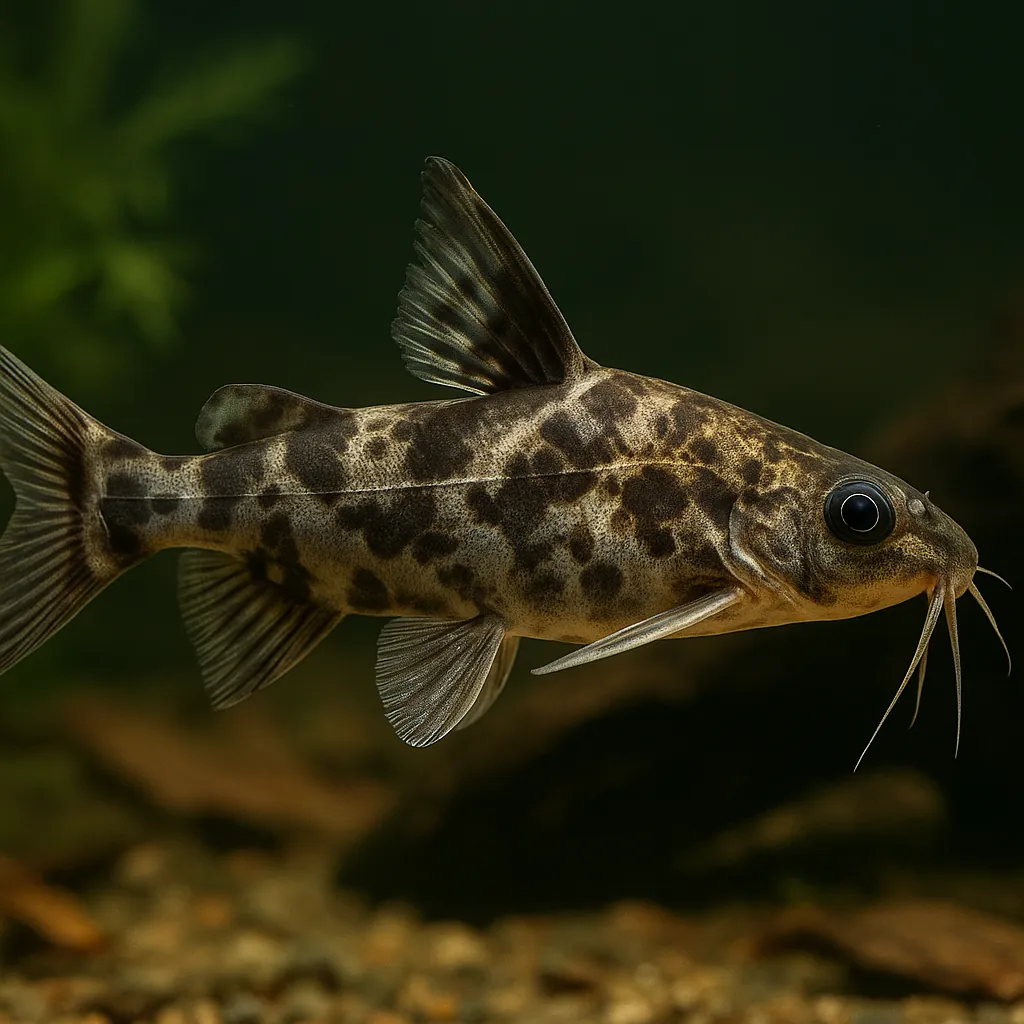
Upside-down catfish
Introduction
The Upside-down catfish (Synodontis nigriventris) is a captivating freshwater species renowned for its unique behavior of swimming upside down. This distinctive trait, coupled with its peaceful nature and manageable size, makes it a favorite among aquarists. Ideal for community tanks, the Upside-down catfish offers both visual interest and ease of care, making it suitable for beginner to intermediate fishkeepers.
Why does the Upside-down catfish swim upside down?
This behavior allows the fish to feed more efficiently on the undersides of submerged surfaces and at the water's surface, where it often hunts for insect larvae.
Is the Upside-down catfish suitable for a community aquarium?
Yes, its peaceful demeanor makes it compatible with various non-aggressive tank mates, enhancing the dynamics of a community setup.
Care and Environment
Providing optimal care for the Upside-down catfish involves replicating its natural habitat and understanding its specific needs.
What is the minimum tank size for an Upside-down catfish?
A minimum tank size of 70 liters is recommended to accommodate a small group, as these fish thrive in social settings.
What are the ideal water parameters for this species?
Maintain a temperature between 24°C and 28°C, a pH of 6.0 to 7.5, and water hardness ranging from 5 to 20 dH to ensure their well-being.
Effective filtration is crucial to keep the water clean and well-oxygenated. Incorporating a moderate current can mimic their natural riverine environment. Lighting should be subdued, as these catfish are nocturnal and prefer dim conditions.
As omnivores, Upside-down catfish accept a variety of foods. Their diet should include high-quality sinking pellets, live or frozen foods like bloodworms and brine shrimp, and occasional vegetable matter such as shelled peas or cucumber slices.
Decorate the tank with a soft substrate, rocks, driftwood, and broad-leaved plants like Anubias or Echinodorus to provide ample hiding spots. Floating vegetation can also offer additional cover, making the fish feel secure.
Are there any specific challenges in keeping Upside-down catfish?
They are sensitive to poor water quality, so regular maintenance and monitoring are essential. Additionally, they may be shy and require sufficient hiding places to reduce stress.
Origin and Habitat
Native to the Congo Basin, including countries like the Democratic Republic of Congo, Republic of Congo, and Cameroon, the Upside-down catfish inhabits densely vegetated riverbanks and slow-moving waters. These environments are characterized by abundant submerged vegetation, providing ample hiding spots and feeding grounds. The water in these regions typically has a moderate flow, with a soft substrate composed of sand and organic matter.
How does the natural habitat influence their behavior?
The dense vegetation and submerged structures in their habitat encourage their upside-down swimming behavior, allowing them to feed on the undersides of leaves and branches.
Do they experience seasonal variations in their natural environment?
Yes, seasonal flooding during the rainy season expands their habitat, influencing their breeding patterns and feeding opportunities.
Temperament and Compatibility
The Upside-down catfish is known for its peaceful and social nature, making it an excellent addition to community aquariums. They are best kept in groups of at least three to four individuals, which encourages natural behaviors and reduces stress.
What are suitable tank mates for Upside-down catfish?
Compatible companions include African tetras, dwarf cichlids like Pelvicachromis species, small mormyrids, gouramis, and Corydoras catfish. These species share similar temperaments and environmental requirements.
Are there any tank mates to avoid?
Avoid housing them with aggressive or significantly larger fish that might view them as prey. Additionally, refrain from keeping them with very small fish that could be mistaken for food.
To foster a harmonious tank community, ensure that all inhabitants have similar water parameter needs and provide ample hiding spaces to accommodate the nocturnal and shy nature of the Upside-down catfish.
Interesting Facts
The Upside-down catfish exhibits several fascinating traits that intrigue aquarists:
- They possess a reverse coloration compared to most fish, with a darker belly and lighter back, aiding in camouflage while swimming upside down.
- Juvenile Upside-down catfish initially swim upright and adopt their characteristic inverted swimming posture around two months of age.
- In their natural habitat, they often feed on insect larvae at the water's surface, utilizing their upside-down swimming to access this food source efficiently.
How long do Upside-down catfish typically live?
With proper care, they can live up to 10 years in captivity.
Is breeding Upside-down catfish in home aquariums common?
Breeding in home aquariums is rare and not well-documented, often occurring accidentally under specific conditions.
Sources
All information in this article has been gathered from the following reputable sources:
Overview
Recommended Tank Size 26.4 Gallons (for groups of 4 or more) |
Minimum Group Size 3 |
Minimum Tank Volume 18.5 Gallons |
Maximum Adult Length 3.9 inches |
Average Adult Length 3.5 inches |
Shoaling (6+ required) Yes |
Preferred Water Type Freshwater, soft to moderately hard, slightly acidic to neutral |
Temperature Range (°C) 24–28 |
pH Range 6.0–7.5 |
Water Hardness (dGH) 5–20 |
Typical Lifespan (years) 10 years |